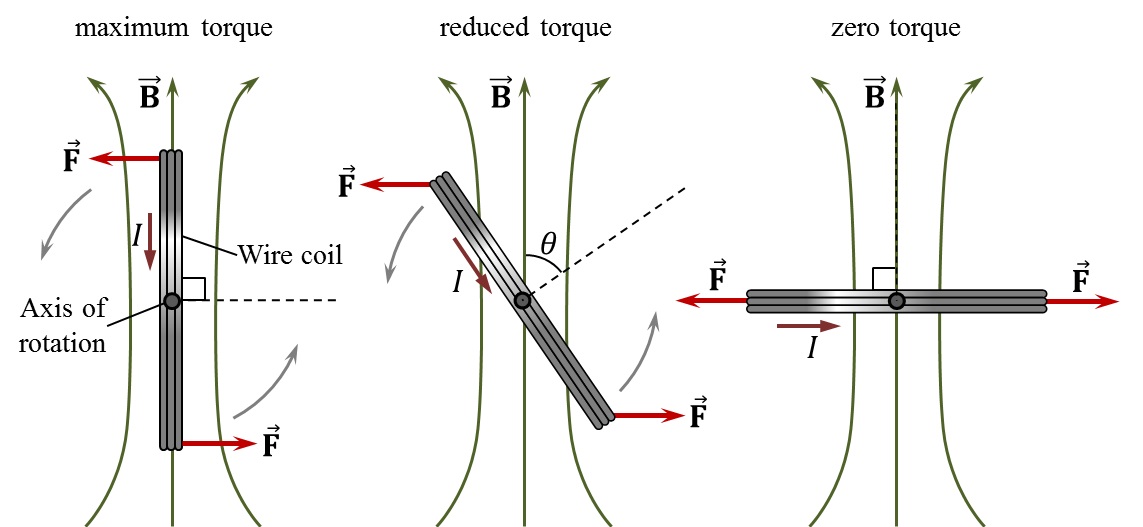
Consider an $N$-turn conducting wire coil placed in a magnetic field $\vec{\text{B}}$. When a current $I$ passes through the coil, it experiences magnetic forces on the opposite ends, as shown in Figure 5.1. The resulting torque causes the coil to rotate towards an orientation where the plane of the coil is perpendicular to the magnetic field. The magnitude of the net torque on the coil is given by the equation \begin{equation} \tau = N I A B\, \sin\theta \end{equation} where $A$ is the area of the coil and $\theta$ is the angle that the normal to the plane makes with the magnetic field.
